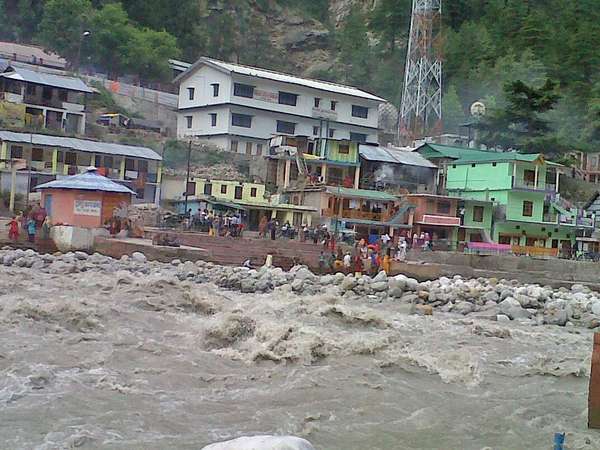The June 2013 floods in northern India have once again opened the sluice-gates for debate on whether dam building and haphazard urban growth in the fragile Himalayan region could have been the trigger behind the massive disaster that struck the states of Uttarakhand and Himachal Pradesh. Even as relief operations continue, we can see strong opinions on blasting, tunneling, clear felling of forests and other modifications of the ecologically fragile mountainscape and how such activities have been responsible for the floods or at the very least, for dramatically increasing the extent of damage that has been caused.
The last few years have seen several large scale disasters which have brought to the fore questions of environmental degradation and social vulnerability time and again. As long as the event continues to be in the news, discussion on socio-ecological issues are abuzz. Even though some of these do result in further studies and investigations or sanction of restoration programmes, there is little evidence that such discourse has been able to alter, in the long term, the conviction that building ports and power projects along the coast or breaking new frontiers of hydro-power development in the highest reaches of the world are risks worth their while.

Devastating floods in Uttarakhand wash away everything. Photo courtesy: Sharada Prasad/Citizen Matters
When the March 2011 Fukushima tragedy struck Japan, India was already witness to struggles against the Jaitapur nuclear power project in Maharashtra and Koodankulam in Tamil Nadu. Even as activists rallied against these two projects, It was reported that following a major earthquake, a 15-metre tsunami had disabled power supply and cooling of three Fukushima Daiichi reactors and eleven of them had to be shut down. It was eventually recorded as a nuclear accident in which 100,000 people were reportedly evacuated and around 19000 recorded dead. None of these deaths, however, were said to be due to radioactive sickness.
The disaster of 11 March 2011 presented many potential similarities and held lessons for India as massive port, thermal and nuclear power projects as well as industrial zones are well underway all along India's coastline. From time to time, warning bells have been rung in the form of protests, written opinions and submissions to the government, but scientists at the highest level, who had been part of the Atomic Energy Commission, have repeatedly dismissed those, saying that Fukushima is seismically not the same as the Indian coast (the Himalayas are comparable however) and that what should be gleaned from the disaster are actually lessons of more robust safety, especially because no radioactive deaths were seen. Notwithstanding the fact that the location of four nuclear power projects in a seismically-prone coastal stretch could result in impact of a much higher scale and that a precautionary approach should be adopted, India has not revisited its conviction that Jaitapur and Koodankulam are foolproof with the necessary safeguards.
Later in 2011 again, an earthquake of magnitude 6.9 on the Richter scale hit north-eastern India. The state of Sikkim bore the maximum brunt of the quake and its aftershocks. Just as in the case of the Uttarakhand floods today, the September 2011 earthquake saw a slew of articulations and reiterations that the state's vulnerability to seismic events such as earthquakes and the impact of landslides have been aggravated by the construction of a large number of hydropower projects. While it might not be possible to ascertain whether the earthquake itself was induced by heavy construction and tunneling in an ecologically volatile mountain region, there are several critical questions to be addressed about what kind of interventions in existing land use increase risk and pressures.
In fact in November 2011, the residents of Chungthang and Shipgyer gram panchayats of Lepcha Reserve of Dzongu, Sikkim, wrote to the managing director of Teesta Urja, seeking damages for the people in the project-affected area during the earthquake. They said that houses already damaged due to blasting and other related construction activities for the Teesta III hydroelectric project being executed by Teesta Urja could not withstand the impact of the earthquake.
It has not even been ten years since the earthquake and tsunami of 2004 - regarded as a disaster of unprecedented magnitude and one of the deadliest ones recorded in history. Indonesia was the hardest-hit country, followed by Sri Lanka, India, and Thailand.
Over the last nine years since the tsunami, there have been drives to strengthen the resilience of the coast through casuarina and monoculture mangrove plantations, construction of sea-walls and massive donor-driven exercises on integrated coastal zone planning.
In many ways the disaster became an excuse for whatever was already planned for India's coast, including infrastructure development that was now pushed through with a language that was more participatory and acceptable. None of the initial questions around the destruction of mangroves, sea erosion and other stated vulnerability factors were able to substantially change the way the coasts were viewed as sites for industrial and infrastructure expansion. It is ironic that establishment of multi-purpose ports, thermal power plants, nuclear power stations and related infrastructure along the coast has spiked like never before.
The Uttarakhand floods bring us back to a situation where we are in a position to review and resurrect some tentativeness in our policy and plan better for socio-ecological spaces. Many carrying capacity studies, post disaster assessments are likely to be undertaken now. Several blame games are already on. With thousands dead and relief operations in progress, it is an important time to introspect on the manner in which India's industrial expansion is inducing vulnerabilities in already fragile areas. But equally, or perhaps, more important now than ever before is a consolidated look at the forgotten lessons from human induced and natural disasters.
























